"Environment is surrounding atmosphere/ condition for existence" - "Environment is an essential natural process or an outcome of occurrence" – "Environment is of two types, one is negative and the other is positive"
Conservation is an ethic of resource use, allocation, and protection. Its primary focus is upon maintaining the health of the natural world: its, fisheries, habitats, and biological diversity. Secondary focus is on materials conservation and energy conservation, which are seen as important to protect the natural world. Those who follow the conservation ethic and, especially, those who advocate or work toward conservation goals are termed conservationists.
We must conserve all parts of our environment. Let us discuss how we can conserve water resources through latest technologies.
WATER CONSERVATION TECHNOLOGIES
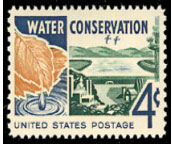
Water conservation refers to reducing the usage of water and recycling of waste water for different purposes such as cleaning, manufacturing, and agricultural irrigation
Water conservation
Water conservation can be defined as:
- Any beneficial deduction in water loss, use, or waste
- A reduction in water use accomplished by implementation of water conservation or water efficiency measures; or,
- Improved water management practices that reduce or enhance the beneficial use of water. A water conservation measure is an action, behavioral change, device, technology, or improved design or process implemented to reduce water loss, waste, or use. Water efficiency is a tool of water conservation. That results in more efficient water use and thus reduces water demand. The value and cost-effectiveness of a water efficiency measure must be evaluated in relation to its effects on the use and cost of other natural resources (e.g. energy or chemicals).
Water efficiency can be defined as the accomplishment of a function, task, process, or result with the minimal amount of water feasible, or an indicator of the relationships between the amount of water needed for a specific purpose and the amount of water used, occupied or delivered.
Goals
The goals of water conservation efforts include:
- Sustainability. To ensure availability for future generations, the withdrawal of fresh water from an ecosystem should not exceed its natural replacement rate.
- Energy conservation. Water pumping, delivery, and wastewater treatment facilities consume a significant amount of energy. In some regions of the world (for example, California) over 15% of total electricity consumption is devoted to water management.
- Habitat conservation. Minimizing human water use helps to preserve fresh water habitats for local wildlife and migrating waterfowl, as well as reducing the need to build new dams and other water diversion infrastructure.
Social solutions
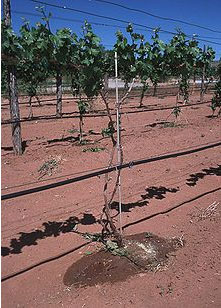
Drip irrigation system in New Mexico
Water conservation programs are typically initiated at the local level, by either municipal water utilities or regional governments. Common strategies include public outreach campaigns, tiered water rates (charging progressively higher prices as water use increases), ictions on lawn sprinklers. Cities in dry climates often require or encourage the installation of xeriscaping or natural landscaping in new homes to reduce outdoor water usage.
One fundamental consevation goal is universal metering. The prevalence of residential water metering varies significantly worldwide. Recent studies have estimated that water supplies are metered in less than 30% of UK households, and about 61% of urban Canadian homes (as of 2001). Although individual water meters have often been considered impractical in homes with private wells or in multifamily buildings, the U.S. Environmental Protection Agency estimates that metering alone can reduce consumption by 20 to 40 percent. In addition to raising consumer awareness of their water use, metering is also an important way to identify and localize water leaks.
Some researchers have suggested that water conservation efforts should be primarily directed at farmers, in light of the fact that crop irrigation accounts for 70% of the world's fresh water use. The agricultural sector of most countries is important both economically and politically, and water subsidies are common. Conservation advocates have urged removal of all subsidies to force farmers to grow more water-efficient crops and adopt less wasteful irrigation techniques.
Household applications
Water-saving technology for the home includes:
- Low-flow shower heads (sometimes called energy-efficient shower heads as they also use less energy, due to less water being heated).
- Low-flush toilets and composting toilets. These have a dramatic impact in the developed world, as conventional Western toilets use large volumes of water.
- Dual flush toilets created by Caroma includes two buttons or handles to flush different levels of water. Dual flush toilets use up to 67% less water than conventional toilets.
- Saline water (sea water) or rain water can be used for flushing toilets.
- Faucet aerators, which break water flow into fine droplets to maintain "wetting effectiveness" while using less water. An additional benefit is that they reduce splashing while washing hands and dishes.
- Wastewater reuse or recycling systems, allowing:
- Reuse of graywater for flushing toilets or watering gardens, and
- Recycling of wastewater through purification at a water treatment plant.
- Rainwater harvesting
- High-efficiency clothes washers
- Weather-based irrigation controllers
- Garden hose nozzles that shut off water when it is not being used, instead of letting a hose run.
- Automatic faucet is a water conservation faucet that eliminates water waste at the faucet. It automates the use of faucets without the using of hands.
Water can also be conserved by landscaping with native plants and by changing behavior, such as shortening showers and not running the faucet while brushing teeth.
Commercial applications
Many water-saving devices (such as low-flush toilets) that are useful in homes can also be useful for business water saving. Other water-saving technology for businesses includes:
- Waterless urinals
- Waterless car washes
- Infrared or foot-operated faucets, which can save water by using short bursts of water for rinsing in a kitchen or bathroom
- Pressurized waterbrooms, which can be used instead of a hose to clean sidewalks
- X-ray film processor re-circulation systems
- Cooling tower conductivity controllers
- Water-saving steam sterilizers, for use in hospitals and health care facilities.
one of the method of water conservation is rain water harvesting
Agricultural applications
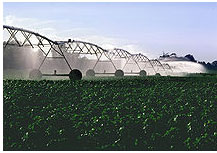
Overhead irrigation, center pivot design
For crop irrigation, optimal water efficiency means minimizing losses due to evaporation, runoff or subsurface drainage. An evaporation pan can be used to determine how much water is required to irrigate the land. Flood irrigation, the oldest and most common type, is often very uneven in distribution, as parts of a field may receive excess water in order to deliver sufficient quantities to other parts. Overhead irrigation, using center-pivot or lateral-moving sprinklers, gives a much more equal and controlled distribution pattern. Drip irrigation is the most expensive and least-used type, but offers the best results in delivering water to plant roots with minimal losses.
As changing irrigation systems can be a costly undertaking, conservation efforts often concentrate on maximizing the efficiency of the existing system. This may include chiseling compacted soils, creating furrow dikes to prevent runoff, and using soil moisture and rainfall sensors to optimize irrigation schedules.
Infiltration basins, also called recharge pits, capture rainwater and recharge ground water supplies. Use of these management practices reduces soil erosion caused by stormwater runoff and improves water quality in nearby surface waters.
Minimum Water Network Target and Design
The Cost effective minimum water network is a holistic framework/guide for water conservation that helps in determining the minimum amount of freshwater and wastewater target for an industrial or urban system based on the water management hierarchy i.e. it considers all conceivable methods to save water. The technique ensure that the designer desired payback period is satisfied using Systematic Hierarchical Approach for Resilient Process Screening (SHARPS) technique.
Another established technique for maximum water recovery is the water pinch analysis technique. However, this technique only focuses on maximizing freshwater and wastewater reduction via reuse and regeneration.
1. The AQUS® Grey Water Recycling System
The AQUS System is a small scale grey water recycling system that treats and recycles waste water captured from the bathroom sink to flush the toilet. The AQUS accomplishes wastewater reuse via a simple and easy to install system which is patented and supported by the eco community.
2. How the AQUS® Grey Water System Recycles Sink Waste Water in the Eco Bathroom
The Fill Control Unit effectively clips onto the back of the customer’s toilet and holds the fill valve up, in the off position, which allows the Vanity Tank located under the bathroom sink to fill the tank with treated and recycled sink grey water. The system does not shut off the fresh water supply or cross connect to it. It simply holds the fresh water "OFF" until it is needed to supplement the toilet fill.
Grey Water Recycling and Wastewater Reuse
It’s easy to implement grey water recycling and wastewater reuse in your eco bathroom. The Fill Control Unit that AQUS uses is compatible with most two piece toilets on the market today (not compatible with dual flush toilets or one piece toilets). The Vanity Tank holds 5.5 gallons of treated grey water and is 13.5" X 15.5" X 9.5" in size.
SPX Cooling Technologies

SPX Cooling Technologies water conservation technology helps keep precious resources from disappearing into thin air. Introducing Air2Air&trade on-site water generation.
In a continuing effort to lead the field in water conservation technology, SPX Cooling Technologies introduces their latest patented breakthrough in industrial cooling tower design — the Air2Air water recovery system. Available both for existing and new cooling towers, customers can reduce cooling tower water consumption by up to 30 percent annually.
More and more industries are facing serious operating constraints due to lack of water resources. The impact to most industries is enormous, with an impact of millions of dollars in lost production and increased water costs. Many plants are finding it difficult to get approval for plant expansions, solely based on lack of water.
SPX scientists and engineers have developed a simple and effective system for recovering much of the water that is evaporated in a standard cooling tower. Recovered water can be returned directly to the tower basin, or even piped away as a pure water stream for boiler make-up or other plant uses.
This revolutionary design utilizes a series of PVC heat exchanger packs in the tower plenum area, using cooler, ambient air to condense much of the moisture before it exits the tower. The system can be installed on a single cell, or on an entire tower, depending on the required water return rate.
Use of this system can allow greater plant production, reduce water consumption and treatment cost, and even replace more costly means of generating pure water.
By combining the Air2Air technology with a hybrid, split steam system, steam plant cooling systems can be optimized to provide the most efficient use of available resources.
Customer Solutions
Like any natural resource, water must be conserved. Droughts, water rights, and increasing competition for available resources mean that using less water more efficiently is more important than ever. Using advanced research and developent and on-site engineers to examine processes, SPX Cooling Technologies is working to solve challenges faced by our customers.
AIR CONSERVATION TECHNOLOGIES
Now we will discuss how we can conserve air through latest technologies.
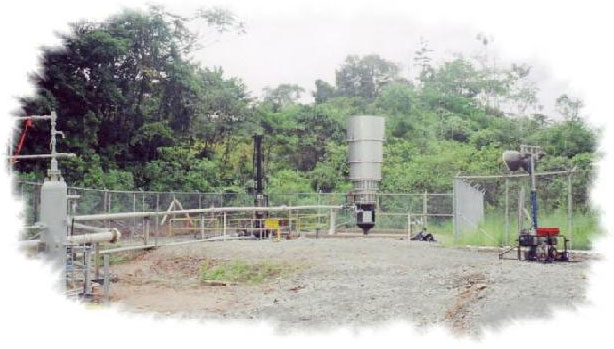
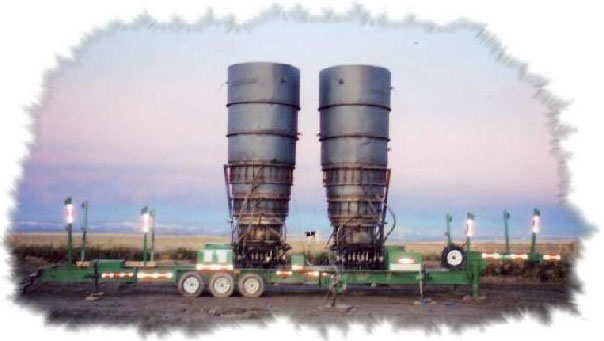
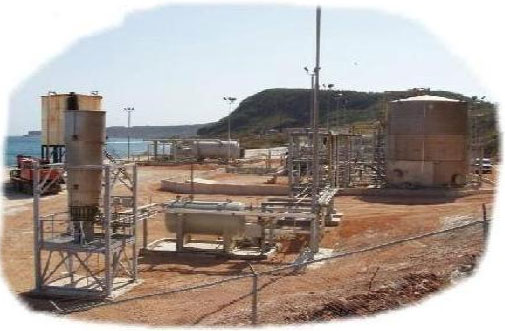
Technology goes a long way in helping reduce air pollution. It not only makes existing technology that releases pollutants more efficiently but it also finds alternate sources of energy that are non polluting or environmentally friendly.
The major cause of air pollution is the burning of fossil fuels for energy. Technology helps design engines that are more fuel efficient there by reducing the amount of fuel being consumed. Technology in the form of solar energy panels, wind turbines, breeder reactors, geo thermal power all help reduce the burning of fossil fuels. Hydrogen fuel cell powered cars and electric powered cars are an alternative to petrol and diesel driven vehicles. Power generation is mostly accomplished through the burning of coal and natural gas powered plants. Though technology is helping us fight air pollution it has got us here to this point in the first place.
SOLAR COOKER INTERNATIONAL PROJECT
The CooKits are benefiting displaced families living in the community of Pigeon, Haiti. As a part of our project, 135 people were taught proper use and care of solar cookers. During the training, solar meals were prepared by the new solar cooks using CooKits and Global Sun Ovens. Trainings were led by a team of three Haitian solar experts and a representative from a partner agency, Sun Ovens International.
Over a period of time, each recipient family will document its solar cooker use, emphasizing reductions in charcoal use and expense. This type of data is valuable when explaining the benefits of solar cookers to families and community leaders. Much of Haiti's extreme deforestation is due to trees being used for cooking fuel, and we believe that expanded and continued use of solar CooKits will help to keep more trees in the ground.
Our next shipment of CooKits to Haiti will be used in schools run by the Free Methodist Mission. Teachers at these schools are working to incorporate solar cookers into the curriculum. Students will learn how to cook food and pasteurize drinking water — potentially life-saving skills — using free, clean solar energy. With new solar cooking kits provided with your funds, these students will be able to pass skills and fuel savings on to their parents, benefiting entire families.
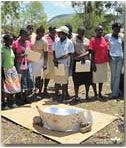 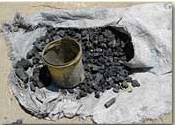  
Soil conservation technologies
Soil conservation is a set of management strategies for prevention of soil being eroded from the earth’s surface or becoming chemically altered by overuse, acidification, salinization or other chemical soil contamination. It is a component of environmental soil science.
Principle approaches
The principle approaches these strategies take are:
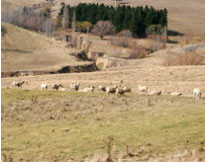
Sheep pasture with macroscale erosion, Australia.
- choice of vegetative cover
- erosion prevention
- salinity management
- acidity control
- encouraging health of beneficial soil organisms
- prevention and remediation of soil contamination
- mineralization
other ways are;
- no till farming
- contour plowing
- wind rows
- crop rotation
- the use of natural and man-made fertilizer
- resting the land (Shmita)
Many scientific disciplines are involved in these pursuits, including agronomy, hydrology, soil science, meteorology, microbiology, and environmental chemistry.
Crops and conservation
Decisions regarding appropriate crop rotation, cover crops, and planted windbreaks are central to the ability of surface soils to retain their integrity, both with respect to erosive forces and chemical change from nutrient depletion. Crop rotation is simply the conventional alternation of crops on a given field, so that nutrient depletion is avoided from repetitive chemical uptake/deposition of single crop growth. we should shelter belt.
Cover crops serve the function of protecting the soil from erosion, weed establishment or excess evapotranspiration; however, they may also serve vital soil chemistry functions. For example, legumes can be ploughed under to augment soil nitrates, and other plants have the ability to metabolize soil contaminants or alter adverse pH. The cover crop Mucuna pruriens (velvet bean) has been used in Nigeria to increase phosphorus availability after application of rock phosphate. Some of these same precepts are applicable to urban landscaping, especially with respect to ground-cover selection for erosion control and weed suppression.
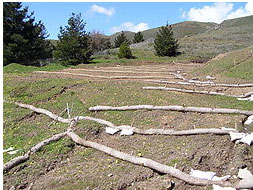
Erosion barriers on disturbed slope, Marin County, California
Windbreaks
Windbreaks are created by planting sufficiently dense rows or stands of trees at the windward exposure of an agricultural field subject to wind erosion. Evergreen species are preferred to achieve year-round protection; however, as long as foliage is present in the seasons of bare soil surfaces, the effect of deciduous trees may also be adequate.
Erosion prevention
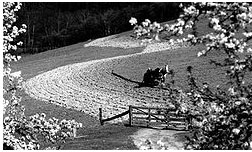
Contour plowing, Pennsylvania 1938. The rows formed slow water run-off during rainstorms to prevent soil erosion and allows the water time to settle into the soil.
Practices
There are also conventional practices that farmers have invoked for centuries. These fall into two main categories: contour farming and terracing, standard methods recommended by the U.S. Natural Resources Conservation Service , whose Code 330 is the common standard. Contour farming was practiced by the ancient Phoenicians, and is known to be effective for slopes between two and ten percent. Contour plowing can increase crop yields from 10 to 50 percent, partially as a result from greater soil retention.
There are many erosion control methods that can be used such as conservation tillage systems and crop rotation.
Keyline design is an enhancement of contour farming, where the total watershed properties are taken into account in forming the contour lines. Terracing is the practice of creating benches or nearly level layers on a hillside setting. Terraced farming is more common on small farms and in underdeveloped countries, since mechanized equipment is difficult to deploy in this setting.
Human overpopulation is leading to destruction of tropical forests due to widening practices of slash-and-burn and other methods of subsistence farming necessitated by famines in lesser developed countries. A sequel to the deforestation is typically large scale erosion, loss of soil nutrients and sometimes total desertification.
Perimeter runoff control
Trees, shrubs and groundcovers are also effective perimeter treatment for soil erosion prevention, by insuring any surface flows are impeded. A special form of this perimeter or inter-row treatment is the use of a “grassway” that both channels and dissipates runoff through surface friction, impeding surface runoff, and encouraging infiltration of the slowed surface water.
Salinity management
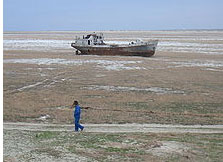
Salt deposits on the former bed of the Aral Sea
Main article: Soil salinity control
The ions responsible for salination are: Na+, K+, Ca2+, Mg2+ and Cl-. Salinity is estimated to affect about one third of all the earth’s arable land. Soil salinity adversely affects the metabolism of most crops, and erosion effects usually follow vegetation failure. Salinity occurs on drylands from overirrigation and in areas with shallow saline water tables. In the case of over-irrigation, salts are deposited in upper soil layers as a byproduct of most soil infiltration; excessive irrigation merely increases the rate of salt deposition. The best-known case of shallow saline water table capillary action occurred in Egypt after the 1970 construction of the Aswan Dam. The change in the groundwater level due to dam construction led to high concentration of salts in the water table. After the construction, the continuous high level of the water table led to soil salination of previously arable land.
Use of humic acids may prevent excess salination, especially in locales where excessive irrigation was practiced. The mechanism involved is that humic acids can fix both anions and cations and eliminate them from root zones. In some cases it may be valuable to find plants that can tolerate saline conditions to use as surface cover until salinity can be reduced; there are a number of such saline-tolerant plants, such as saltbush, a plant found in much of North America and in the Mediterranean regions of Europe.
So we can conclude that the age old practices are not enough to cope up with the increasing pollution of land, water, soil, noise, etc. with increasing population. Thus new and advanced technologies are the need of the hour for conserving all resources and protecting our environment. |

